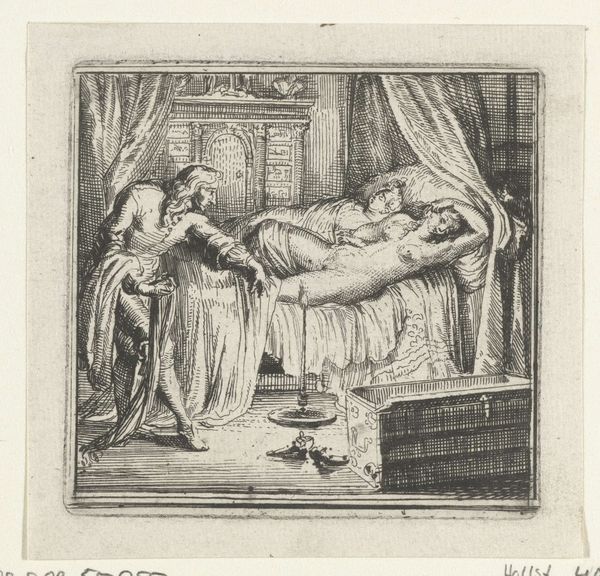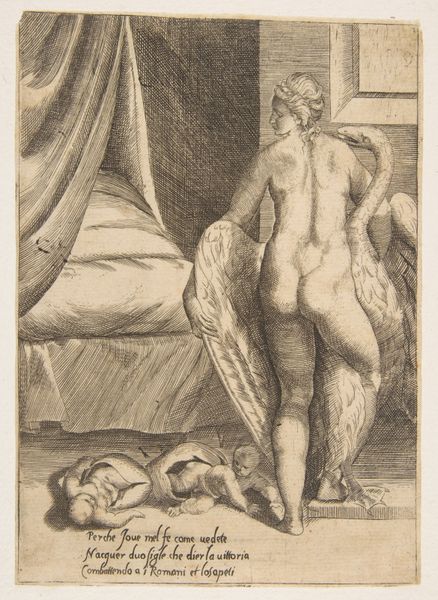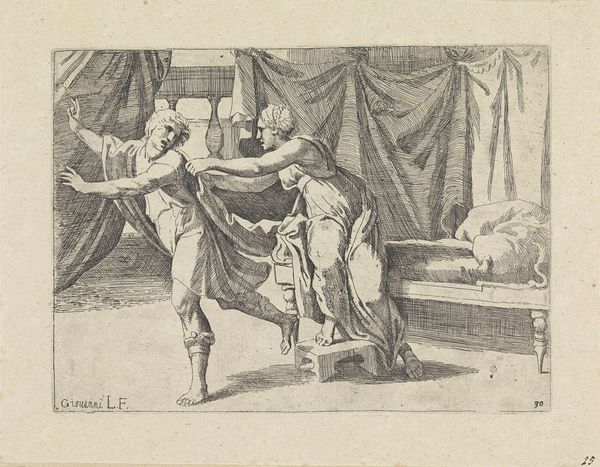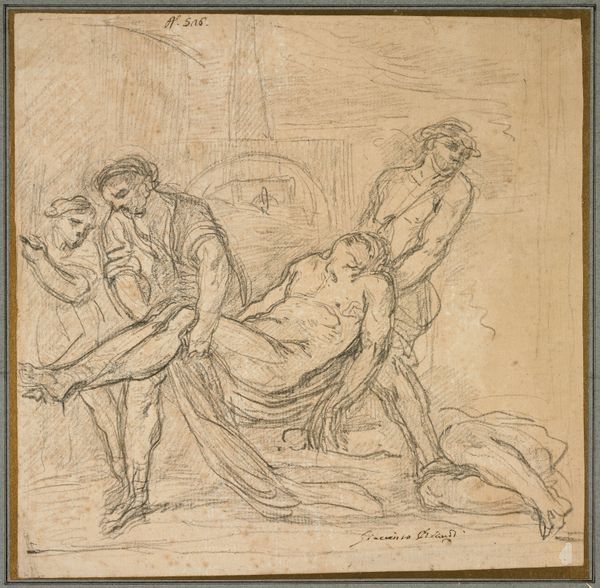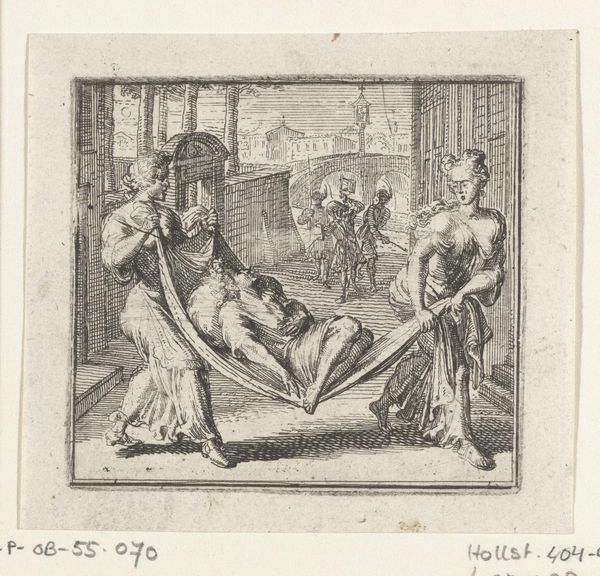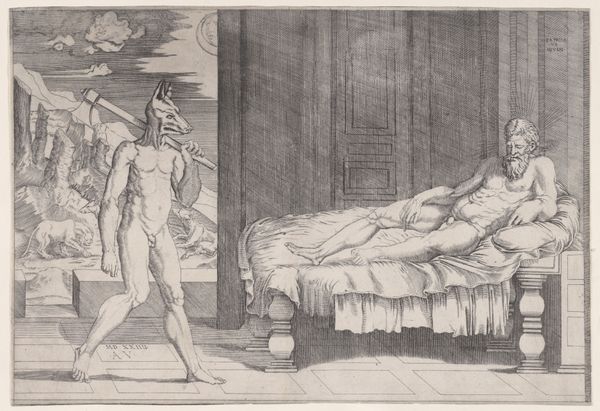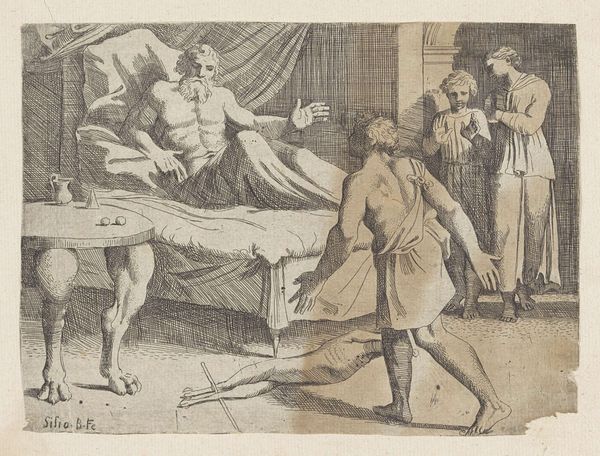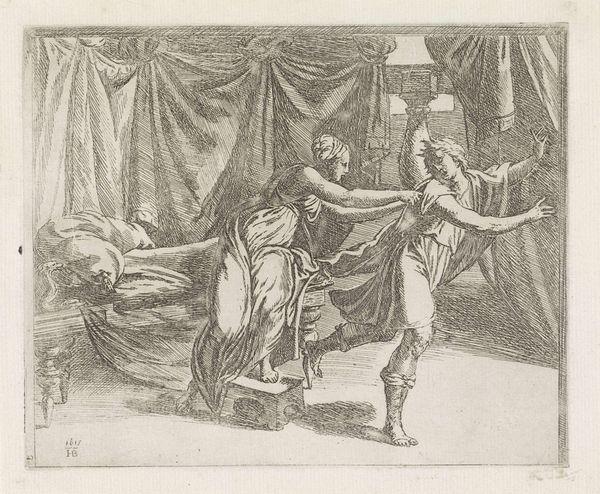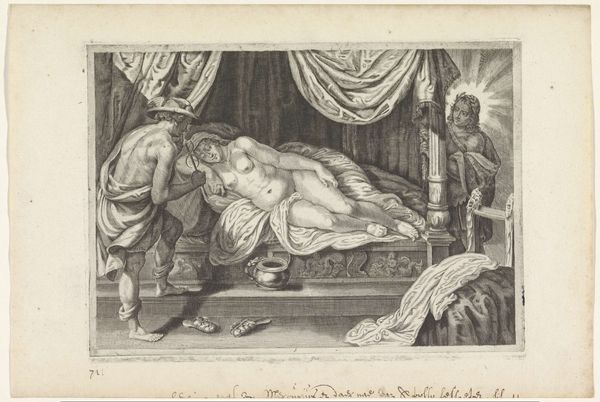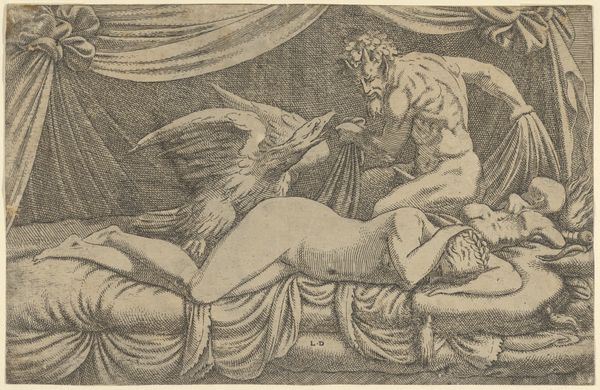
print, engraving
#
baroque
# print
#
figuration
#
line
#
history-painting
#
engraving
Dimensions: height 166 mm, width 183 mm
Copyright: Rijks Museum: Open Domain
Curator: Before us is Orazio Borgianni's "Isaak belooft Esau een tweede zegening," or "Isaac Promises Esau a Second Blessing," an engraving created around 1615, housed right here at the Rijksmuseum. Editor: My initial impression is a scene of dramatic tension, yet rendered with a delicate linearity. The artist emphasizes contrasts, and the figures have that stark light characteristic of the baroque. Curator: Indeed. Borgianni captures a pivotal biblical narrative here. Blind Isaac, misled, mistakenly blessed his younger son Jacob. Esau, returning from the hunt, seeks a second blessing. What emotions resonate for you? Editor: There is an unmistakable sense of anguish in Esau's stance – a physical recoil paired with extended arms. The composition itself, with Isaac enthroned on the bed as if on an altar, elevates the scene to something more significant than a simple domestic drama. The shadow cast on the ground also looks remarkably ominous. Curator: Exactly. That shadow plays into the broader symbolic context. Isaac embodies fading authority; the blessing, cultural legitimacy being bartered. Note Esau's body – he seems almost exposed as if the garments could symbolize not being "clothed" with blessings or status. It is intriguing, and rather sad. Editor: And see how the lines are both descriptive and expressive? They create both form and evoke emotion. Consider the treatment of drapery versus the stark, more definitive lines that define Esau's torso and face. It reinforces that physical and emotional rawness. Curator: The beauty of this work lies in its ability to weave a personal and political saga. Isaac’s failure, Esau's frustration and later his perceived loss; it touches on themes still echoing today: legacy, deception, the human condition in all its beautiful imperfection. Editor: The longer one looks, the more those lines reveal depth. Beyond depicting the scene, it evokes something unsettling in its very construction, like the threads of narrative, ethics, and history unravelling simultaneously before us. It's brilliant.
Comments
No comments
Be the first to comment and join the conversation on the ultimate creative platform.

